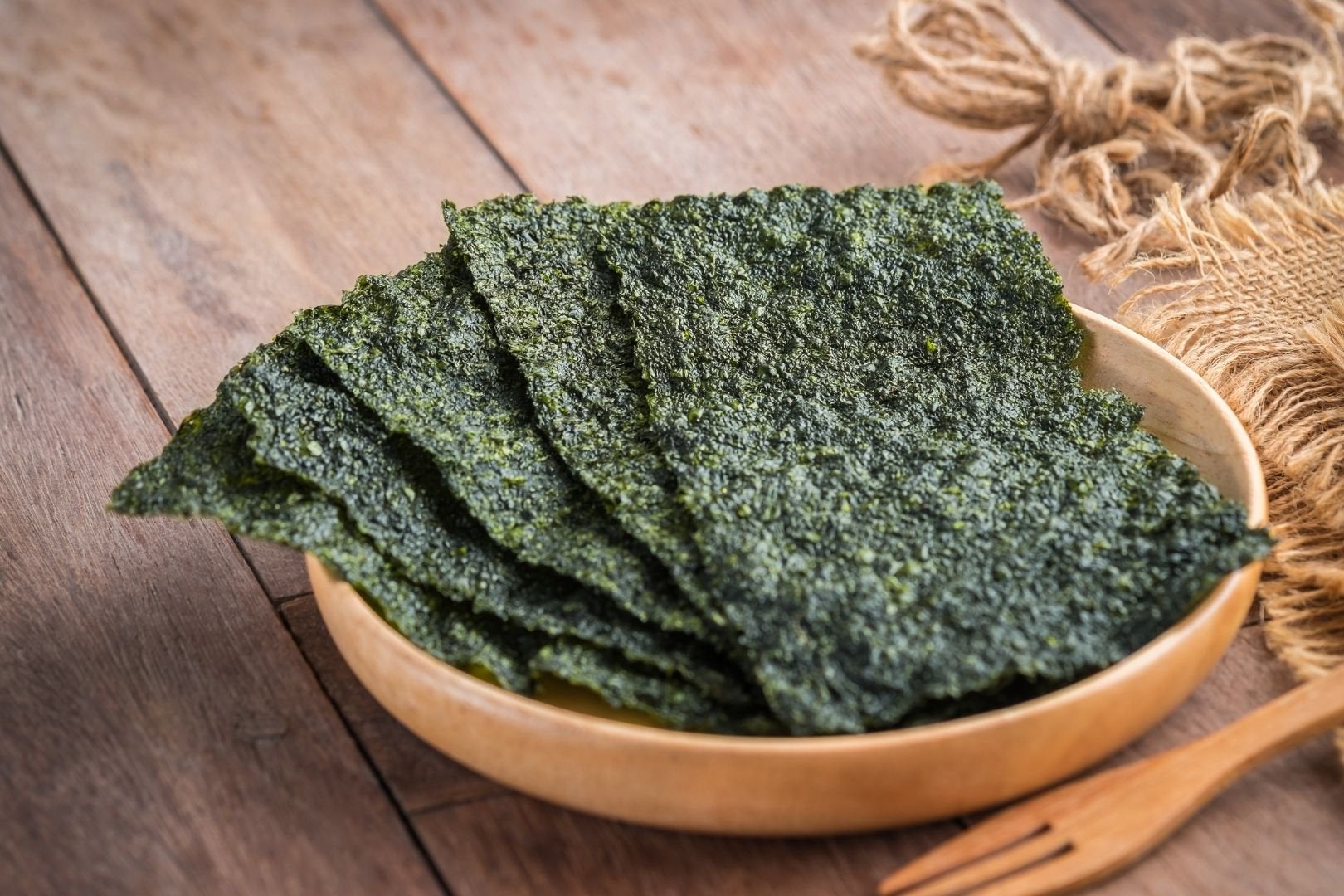
I found this article really interesting! I love seaweed and never knew the names aside from Nori and Kombu…
Source: [https://www.japanesefoodguide.com/edible-japanese-seaweed-types/](https://www.japanesefoodguide.com/edible-japanese-seaweed-types/)
​
How many types of edible seaweed have you eaten, and how many can you name?
Chances are, if you’ve been to a Japanese restaurant, you’ve probably encountered *nori* wrapped around your sushi, *wakame* in your miso soup, maybe a small side dish of *su-no-mono* (cold dish in vinegar) with cucumbers and *mozuku*, and the dashi (broth) in your soup may have been taken from *kombu*…this is just to say, how much of an integral part of Japanese cuisine edible seaweed is.
In this article, we will explore the most common types of Japanese seaweeds and how they are commonly eaten.
## The Japanese have been eating seaweed since ancient times
In Japan, a country surrounded by the sea, seaweed has been an important part of the diet since ancient times. Particularly rich in minerals such as iron, calcium, magnesium, phosphorus, potassium and iodine as well as fiber, the Japanese have been eating seaweed for a long time, and it is still a very important part of Japanese cuisine today.
Harvesting seaweed, particularly *wakame*, has been part of an ancient shinto ritual that is called “Mekari Shinji” in northern Kyushu and San-in areas, and records show that it was an annual rite already back in the year 710, so we have been eating seaweed for at least 1300 years, but probably longer.
## The most common types of seaweeds in Japanese cuisine
Seaweed can be categorized into green algae, brown algae and red algae. The most commonly eaten seaweeds are brown algae and includes *kombu*, *wakame*, *mekabu*, *hijiki* and *mozuku*. Green algae include *umibudou* and *aonori*, while red algae include *nori* and the colorful *tosakanori*, often used to add color to a seaweed salad or to sashimi.
Now let’s jump into the different types of seaweed eaten in Japanese cuisine. Below you can find the eight most common types of seaweed that are eaten in Japan.
1/
**Type of Japanese seaweed**: Nori
**How it’s sold**: In dry, flat sheets, either unsalted or as Ajitsuke (flavored) Nori.
**How it’s prepared**: Either seared to crisp it up or as is.
**How it’s eaten**: Wrapped around sushi, onigiri, cut thinly as garnish.
2/
**Type of Japanese seaweed**: Aonori
**How it’s sold**: In dry powder form.
**How it’s prepared**: Used straight out of the packaging.
**How it’s eaten**: Sprinkled onto okonomiyaki, takoyaki etc.
3/
**Type of Japanese seaweed**: Kombu, mostly harvested in Hokkaido
**How it’s sold**: Dried, unless you are buying *shio-kombu* (salted kombu) which is used as a condiment and is usually sold semi-dried, or you are buying *kombu no tsukudani*, kombu simmered in soy sauce and mirin, usually an accompaniment for rice. Kombu tea, a savory type of tea with powdered kombu in it also exists, often containing pickled plum, but it is different from what’s called Kombucha in the West (the fermented drink).
**How it’s prepared**: Placed in water to hydrate, the liquid is used as kombu dashi (broth), the seaweed itself can be cooked and eaten as below.
**How it’s eaten**: The kombu dashi can be used in soups, the hydrated kombu can be wrapped around other foods as kombu-maki, or eaten as a tsukudani to accompany rice, or made into shio-kombu, a condiment used in cooking.
4/
**Type of Japanese seaweed**: Wakame
**How it’s sold**: Most often dried, but sometimes raw (Nama-wakame).
**How it’s prepared**: Wakame is usually sold dried, so it is soaked in water to rehydrate it.
**How it’s eaten**: It is a very common ingredient in miso soups, it can be eaten as part of a seaweed salad, or as a su-no-mono (dish served with vinegar), such as with cucumber and octopus slices.
5/
**Type of Japanese seaweed**: Hijiki
**How it’s sold**: Dried.
**How it’s prepared**: Hydrated then simmered in soy sauce, mirin and sugar with carrots, aburaage (deep fried tofu strips), soy beans, konyaku strips, lotus root etc.
**How it’s eaten**: Prepared as a side dish.
6/
**Type of Japanese seaweed**: Mozuku
**How it’s sold**: Raw, in plastic cups, some are sold already in vinegar.
**How it’s prepared**: Placed in vinegar if not already, or placed in soups.
**How it’s eaten**: Mozuku is often eaten in vinegar as a side dish, but also can be part of soups.
7/
**Type of Japanese seaweed**: Mekabu is the soft and slimy, flowering part of wakame seaweed
**How it’s sold**: Raw, much like mozuku.
**How it’s prepared**: Placed in vinegar or ponzu as a side dish.
**How it’s eaten**: As a salad, sometimes with Nagaimo (Chinese yam) to enhance the slimy texture.
8/
**Type of Japanese seaweed**: Umibudou (Umibudō), harvested in Okinawa
**How it’s sold**: It is rare to find umibudou at supermarkets unless you are in Okinawa where it is harvested. It is often served in izakaya (Japanese drinking establishments) sometimes accompanied with sashimi or in places that serve Okinawan food.
**How it’s prepared**: Washed and served raw.
**How it’s eaten**: Usually this is eaten raw to enjoy the little caviar-like bubbles.


AloJapan.com